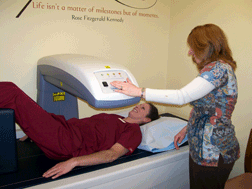- Basic Life Support & First Aid Training
- Audiology & Hearing Aids
- Cardiopulmonary Services
- Case Management & Social Work
- Emergency Services
- Dietary Services
- Imaging
- Infusion Treatment Rooms
- Interventional Pain Management
- Laboratory
- Medical Records
- Orthopedic Services
- Patient Registration
- Penobscot General Surgery
- Penobscot Valley Primary Care
- Rehab – Physical, Occupational, & Speech Therapy
- Urology Services
- Surgical Services
- Swing Bed Program
- Occupational Health Services
- Podiatry Services



 Twenty-five million Americans have osteoporosis, a disease that decreases bone density and increases bone fragility leaving the victim susceptible to fractures. Early diagnosis and treatment of osteoporosis can significantly reduce the risk of fracture. Bone Densitometry is an essential tool in the diagnosis and management of osteoporosis. Penobscot Valley Hospital’s state-of-the-art Lunar Bone Densitometry system can provide physicians with this vital information.
Twenty-five million Americans have osteoporosis, a disease that decreases bone density and increases bone fragility leaving the victim susceptible to fractures. Early diagnosis and treatment of osteoporosis can significantly reduce the risk of fracture. Bone Densitometry is an essential tool in the diagnosis and management of osteoporosis. Penobscot Valley Hospital’s state-of-the-art Lunar Bone Densitometry system can provide physicians with this vital information.